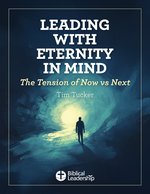How great leaders use mid-year check-ins to reset culture, refocus goals, and build momentum
 Adobe
Adobe
Some of the most important leadership moments don't happen on a stage or in a strategy session. They happen in simple, intentional conversations—like the ones you have at mid-year.
This season offers you something rare as a leader: just enough distance from the goals you set in January to reflect meaningfully, and just enough time left in the year to realign your team with purpose.
Mid-year check-ins are not about paperwork or performance ratings. They're about connection, clarity, and culture. Done well, they help your team recommit to what matters most—and give you as the leader a chance to coach, course-correct, and build momentum for the second half of the year.
If your team feels a little off right now… if the pace has slowed, or energy has dipped, or focus has faded... this is your opportunity to lead with intention.
Here's how to make the most of it.
Start with what's working
Too often, we move straight into metrics and performance gaps. But the most powerful way to begin a mid-year conversation is with a simple question: What's going well?
When you lead with what's working, you invite openness. You affirm progress. And you remind your team that their effort matters.
This isn't just about boosting morale—it's about building momentum. Recognizing wins, even small ones, helps your team name what's effective so they can repeat it.
Ask:
What goals have you made the most progress on—and what contributed to that success?
Reevaluate and realign goals
No matter how clear your plans were in January, things change. New priorities emerge. Challenges reshape timelines. Roles evolve.
What matters is not whether you stayed perfectly on track—it's whether your goals still reflect where you're headed.
Take time to revisit and realign. Clarify what still matters. Release what doesn't. Reframe what needs to shift.
To structure this, I recommend using a simple performance plan with three categories:
Role-specific goals
3–4 objectives that directly support the organization's mission
Personal development goals
1–2 areas of individual growth or skill development
Values-based goals
1 behavior-based goal that connects to your organization's values
This framework brings alignment between the work that needs to get done, the growth your team desires, and the culture you're committed to building.
Ask:
Do all of your goals still feel meaningful and aligned to your role and the direction we're headed?
Identify and remove roadblocks
If progress has stalled, don't rush to problem-solving or performance pressure. First, ask what's in the way.
Your role as a leader is not to enforce—it's to empower. And often the most empowering thing you can do is remove an obstacle your team member hasn't been able to move on their own.
This requires curiosity, not critique. Your job is to create space for honest answers—and then act on what you hear.
Ask:
What's getting in the way of progress—and how can I help remove that barrier?
Reconnect goals to the bigger picture
One of the most common causes of disengagement isn't fatigue—it's disconnection.
When team members lose sight of how their work contributes to the broader mission, motivation fades. As the leader, it's your job to connect the dots.
Help your team see why their role matters. Show them how the work they do—however behind-the-scenes—creates impact.
Ask:
How do your current goals support our broader mission? What would help you feel more connected to that impact?
Reignite personal development
Mid-year is a great time to ask your team what growth looks like in this next stretch of the year. When you make space for development—not just deliverables—you build trust, retention, and engagement.
Encourage stretch goals. Support learning opportunities. Acknowledge where someone wants to grow and show you care about more than their output.
Ask:
What skills or experiences do you want to develop in the second half of the year?
Use a clear framework to guide the conversation
One of the best ways to make this conversation actionable is to use a structured framework like the Performance Plan Template.
It gives your team a simple format to outline meaningful goals in three key areas:
- Role-specific goals
- Personal development goals
- Values-based goals
Set a clear timeframe—ideally a six-month plan. That's long enough to see meaningful progress, but short enough to adapt if priorities shift.
Then, follow up monthly with these three questions:
- What did you accomplish toward your goals in the last 30 days?
- What will you focus on next?
- How can I support you?
A consistent rhythm of clarity and connection helps your team stay engaged—and helps you stay ahead of potential drift.
Final thought
Mid-year isn't just a checkpoint. It's a chance to lead on purpose.
Not by micromanaging performance—but by developing people.
Not by pushing harder—but by realigning priorities.
Not by rushing past the moment—but by investing in it.
Great leaders don't just evaluate performance. They unlock it.
If you want to lead a meaningful mid-year conversation that builds momentum for your team and strengthens your culture, start here.
Your next leadership breakthrough might not come from a big shift—but from a better conversation.
| Jenni Catron is a writer, speaker, and leadership coach who consults churches and non-profits to help them lead from their extraordinary best. As Founder and CEO of The 4Sight Group, she consults with individuals and teams on leadership and organizational health. Learn More » |
More on Leadership Development & Discipleship
- Responding to God’s activity in America (by Richard Blackaby)
- The casualty of Christmas (by Carey Nieuwhof)
- True repentance (by Bob Russell)
- The four faces of the nones: what Ryan Burge’s new research reveals (by Thom Rainer)


